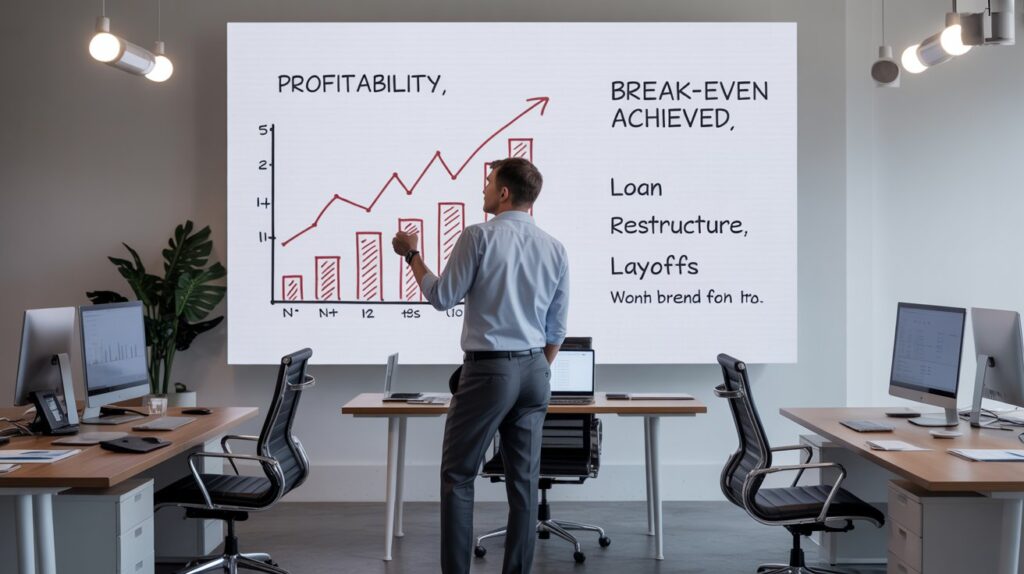
TL;DR
- Medium CEO Tony Stubblebine revealed that the company has remained profitable since August 2024, reversing a previous $2.6 million monthly burn.
- A combination of product shifts, cost cuts, investor restructuring, and engineering optimization enabled the turnaround.
- Stubblebine negotiated down $37 million in loans, eliminated $225 million in liquidation preferences, and cut headcount from 250 to 77.
- Medium’s Partner Program, Boost, and Featuring tools were refined to support high-quality amateur content.
- The company’s previous $600 million valuation was diluted significantly, but Stubblebine emphasized profitability over prestige.
Medium Was Losing Millions—and Its Direction
When Tony Stubblebine took over as CEO of Medium in 2022, the platform was hemorrhaging cash—$2.6 million per month—and had no path to exit or funding. Subscriber numbers were slipping, investor patience was wearing thin, and the internal business model was losing alignment with its core user base.
“We had one option: make Medium profitable or shut down,” Stubblebine wrote in a recent post.
A Business Model at Odds with Its Writers
Medium’s previous strategy of bundling professional editorial content with grassroots writers proved problematic. High-quality in-house stories, though well received, began diverting attention away from Medium’s true foundation—amateur experts, academics, and storytellers.
Stubblebine saw the need to recalibrate: refocus on user-generated content and amplify stories that “come from living interesting lives.”
Product Overhauls: Boost, Partner Incentives, and Featuring
To support this pivot, Stubblebine led several product updates:
- Boost: Added human curation to Medium’s recommendation engine, giving thoughtful writing more exposure.
- Reformed Partner Program: Shifted monetary rewards toward originality and quality, rather than just volume.
- Featuring Tool: Empowered publications to promote other writers and community stories, enhancing discoverability.
These product enhancements aimed to rebuild trust and traffic around Medium’s core writers, rather than rely on editorial or algorithmic dominance.
Medium’s Financial & Structural Turnaround
| Metric | Value |
| Monthly Loss Before Turnaround | $2.6 million |
| Headcount Before vs After | 250 → 77 employees |
| Cloud Costs (Monthly) | $1.5M → $900K |
| Office Lease Cost | $145,000/month (SF) |
| Loans Owed | $37 million |
| Liquidation Preferences Held | $225 million |
| Profitability Achieved Since | August 2024 |
| Platform Subscribers (as of 2022) | 760,000+ |
| Layoffs | ~70% workforce reduction |
| Known Valuation (Historical) | $600 million |
| New Valuation | Not disclosed, but lower |
Financial Restructuring: Renegotiating Debt and Investors
Medium’s balance sheet was burdened by $37 million in outstanding loans and $225 million in liquidation preferences, which prioritized investors over employees in the event of a sale.
To clean up this structure:
- Stubblebine converted loans into equity, threatening to walk if investors didn’t agree.
- He then recapitalized the cap table, consolidating five investor tranches into one, and eliminated liquidation preferences.
- Only 6 of 113 investors participated, but this move made Medium investable again.
“The investor restructuring required a bit of a sweet spot. The business had to look good enough to save, but not so good that there were other options,” said Stubblebine.
The Human Cost: Layoffs and Office Closures
Cutting costs meant making hard decisions. Medium laid off nearly 70% of its staff, dropping from 250 employees to just 77. It also terminated its San Francisco office lease, which was costing $145,000 monthly for a 120-desk space.
Other cost-cutting efforts included:
- Downsizing cloud infrastructure, saving $600,000 per month.
- Offloading acquisitions: Two were sold and one was shut down.
Employees were also granted new equity packages, given that previous shares were rendered worthless post recapitalization.
Equity Clean-Up: A “Cram-Down” Worth Surviving
Medium’s leadership made the painful but necessary decision to perform a “cram-down” round, diluting prior stakes in order to give the company a fighting chance. The cap table clean-up gave space for employee retention packages and simplified governance.
“We are profitable and they are not. That’s a comparison point that serves us better,” Stubblebine noted, referencing other startups with inflated but non-performing valuations.
Investors Who Played Ball
In his post, Stubblebine shouted out VCs who remained constructive during the crisis. Supportive firms included:
- XYZ Ventures (Ross Fubini)
- Upfront Ventures (Mark Suster)
- Greylock
- Spark Capital
- Andreessen Horowitz (a16z)
These investors helped Medium execute a survival strategy that prioritized long-term viability over liquidation preference recovery.
No Valuation, Just Profit
Medium, once valued at $600 million, did not reveal its current valuation post recapitalization. However, Stubblebine emphasized that profitability—not perceived market value—was the new benchmark.
“I have no ego about what our current valuation is. But I’m not going to tell you because I don’t want that used as a point of comparison with other startups.”






